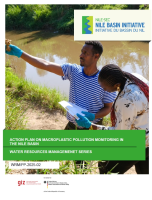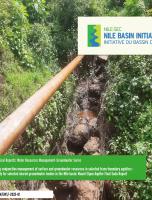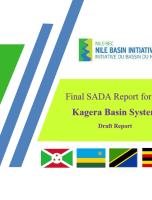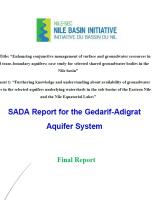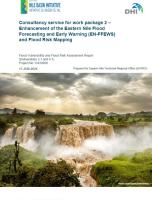Abstract
Studies carried out by the Nile Basin Initiative has indicated that the degree of water shortage
in Nile Basin countries may be more severe in the future. In addition, due to climate change
certain regions receive precipitation that do not follow historical climate patterns and
experience intra-annual water shortage. Therefore, an evaluation of potential freshwater
sources to ensure a secure future is beneficial. As the technologies to reuse water or to
desalinate brackish and seawater become more mature and the membrane treatment cost is
decreasing in general, it is projected that water reuse and/or desalination could play an
important role, particularly when projecting 20–30 years into the future. This project studies
existing water reuse and desalination practices in Nile Basin countries and worldwide and use
the information to project scenarios of water reuse and desalination in the near and distant
future.
A preliminary survey of literatures on technology, economic, and policy aspects of water reuse
and desalination worldwide and Nile Basin countries was conducted. Classification of water
reuse and desalination can be based on the type of wastewater to be collected, on the
treatment method, or on the target purpose in which the water is being reused for. In this
project, the classification for water reuse will be based on the collection method. The
classification for desalination is based on total dissolved solid (TDS) or salt concentration.
Further research on worldwide practices indicates it would be useful to further classify reuse of
municipal water to two categories, potable and non-potable, to further take into consideration
the differences in policy and implementation in these two categories. Therefore, overall the
classification for this project includes 6 categories:
(i) Reuse of municipal water for non-potable use, these uses include agriculture,
industry, and landscaping;
(ii) Reuse of municipal water for potable use;
(iii) Reuse of industrial water;
(iv) Reuse of agricultural drainage water for agricultural purpose;
(v) Desalination of seawater, usually defined as desalination of water with TDS 33,000
ppm, even though the average seawater salinity is 35,000 ppm.
(vi) Desalination of brackish water, defined as containing 500 to 30,000 ppm salt (0.05 to
3.0 %). Brackish water often is found in estuaries, mangroves, and saline
groundwater source.
Because quite a number of the water reuse and desalination in the Nile Basin countries are at
the beginning phase (budgeted but no tender awarded) or currently at small-scale, the cost for
water produced (at a scale to actually make an impact on water supply) and a number of the
lessons learnt are extracted from worldwide examples
